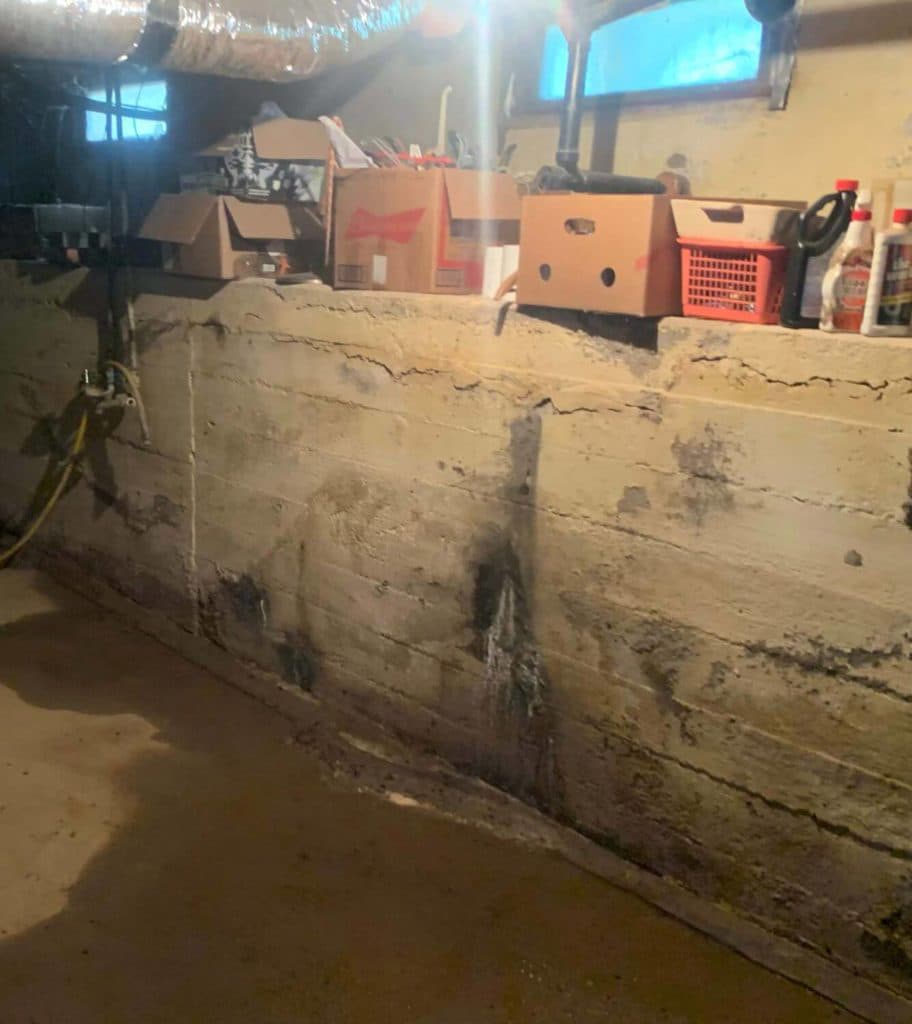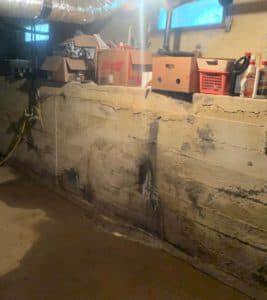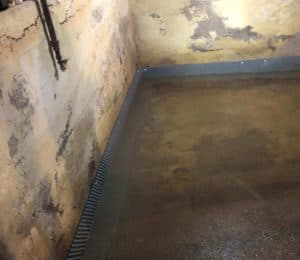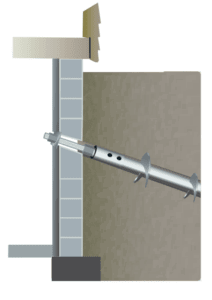
Have you ever gone into a Michigan basement and noticed that there’s a concrete ledge all the way around the perimeter? It’s usually about 3 feet below from the ceiling, and the walls below it sometimes slope towards the center of the room.
It’s a unique basement style often found in older homes, and it has distinct structural characteristics.
No one really seems to know why it’s named that—maybe it’s a trend that began in that state. Maybe the contractor who developed it was living in, or had come from, Michigan. Regardless of how it got the name, it has stuck.
Homes with Michigan basement walls pose some challenges that not every contractor is capable of managing. These structures have a less typical foundation style, so there are some variations and limitations on what can be done.
At Acculevel, we repair foundations and waterproof all kinds of basements and crawl spaces. Founded in 1996 by Andy Beery, we are a family-owned and operated company that operates out of our home office in Indiana.
In this article, we’re going to explain what a Michigan basement is, how it is formed, how it can be repaired, what methods work best, and how it should be waterproofed.
Table of Contents
For the answer to that, we can look to Michigan’s own building glossary: “A former crawl space which has been dug out, generally to a depth of 5 to 7 feet to allow a basement. The excavation begins approximately 2 feet in from the inside of the existing foundation walls in order to preserve the soundness of the existing foundation walls and footings.”
A Michigan basement is a crawl space that has been converted into a basement. The crawl space footings are covered, which creates the shelf or ledge commonly associated with this type of foundation. The center of the crawl space inside this ledge is then excavated, creating a functional basement space. This new basement is then filled in with concrete, either poured or block, ensuring durability and stability.
 This Michigan basement needs waterproofing and crack repairs.
This Michigan basement needs waterproofing and crack repairs.
(Photo taken by an Acculevel project manager during a routine free estimate).
The basics of water drainage are done just as they would be for any other type of basement. The foundation type is checked, then the appropriate drainage channel is installed. For more specific information about the types of drainage Acculevel offers, this blog explains each in greater detail, along with pricing information.
The water drainage is directed to a sump pump, which is the mechanism that collects and expels the water through a discharge line. If the basement is going to be used as storage space or finished to use as living space, we recommend that encapsulation be installed. White cap should be applied from above the ledge to the floor, to ensure any water that gets into the basement is moved directly into the drainage system.
 Homeowner opted to not install encapsulation
Homeowner opted to not install encapsulation
(Photo taken by an Acculevel crew member after the water drainage and sump pump were installed).
If you have a bowing wall in your Michigan basement, you need to address that promptly. Once a wall begins to bow, things will only get worse, the longer you wait. For a more typical basement, there are a few different options we can use to stabilize a bowed wall. But if you have a Michigan basement, we’ll need to use helical tiebacks.
Tiebacks are installed from inside the basement, and no excavation outside the home is necessary. A steel plate is attached to the basement wall, and a steel rod with helical ‘blades’ is driven through the wall, down into the earth. These normally extend approximately 10 feet down and out, until they reach solid, undisturbed soil.
 Illustration of a helical tieback.
Illustration of a helical tieback.
As the tieback is ‘screwed into’ the earth, the installation crew tracks the torque (or force) needed to twist the tieback. When the necessary torque is reached, the installation is complete. Acculevel guarantees that our helical tiebacks will remain firm and stable for the life of your structure. If you would like additional information about bowing walls, repairs, and costs, we have a blog that reviews those here.
This is an instance where your basement type does NOT matter. The best repair method for a settling foundation is helical piers, and these are safe and effective with any foundation made of concrete.
Not sure if your home is settling? The most common signs are:
 This type of crack indicates the foundation is settling.
This type of crack indicates the foundation is settling.
(Picture taken by an Acculevel project manager during a routine estimate appointment).
As you may have guessed from the name, helical piers and tieback look somewhat similar. Both are steel posts with screw-like blades that twist into the ground. Piers are considerably longer- normally 21 feet- and attach to the footing of your home with a steel bracket. For a more in-depth look at how piers are installed and what they cost, we have a blog that illustrates these in detail here.
When your home has an unusual feature like a Michigan basement, it’s essential to understand its unique structure and maintenance requirements. What is a Michigan basement? It’s a converted crawl space with distinct characteristics that require specialized repair techniques.
We don’t say this to alarm you; instead, we want to make certain you’re well-informed and prepared to ask the appropriate questions. We never want anyone’s home to be damaged, or their family put at risk, by someone inadvertently doing more harm than good.
If you haven’t needed to hire a contractor for home repairs, or if it’s been a few years, I’d like you to check out our guide to questions you should ask a contractor. It includes all the questions we think homeowners should ask, Acculevel’s answers to those questions, and a downloadable version that you can use during your appointment with a contractor.
Before you sign a contract for any service, you should always verify the company is reputable, insured, and accredited by the Better Business Bureau. If you live in Indiana or the surrounding states, contact Acculevel. We’ll schedule an appointment for you with one of our knowledgeable project managers, who will recommend the best course of action for you to keep your home healthy and solid for many years to come.
[DISPLAY_ULTIMATE_SOCIAL_ICONS]